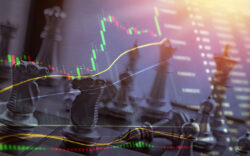For many, the rollout of vaccines and associated relaxing of various forms of lockdowns are cause for relief – celebration even. But there is another pandemic of sorts already on the way: inflation. Prices for food, energy and certain basic goods have risen sharply of late.
While some claim that these price spikes will only be transient and remain contained to a few areas, the truth could well turn out to be far different. If inflation surges, the potential impact on savers could be severe, especially those reliant on primarily fixed incomes. There are, however, a few things investors can do to protect their portfolios, and the time to act is now.
Why now? After all, we’ve been warned about soaring inflation for years. Back in 2008, when the global financial crisis hit, central banks printed money. Lots of it. Many governments also ran up deficits. But large increases in consumer prices never seemed to arrive.
The same cannot be said for property and other assets. With interest rates low, homeowners have found they can afford to borrow more, and they have. But rising property and asset prices actually help to explain why there hasn’t been a more general surge in goods price inflation since 2008. To understand, we need to consider how money is created in the first place.
Follow the money
What happened in 2008 and after was that central banks created a form of money known as reserves. Reserves are in fact only an imaginary form of money. They represent the potential for money creation, rather than actual money itself. Reserves only turn into real, spendable money when someone goes to the bank to borrow.
As the saying goes, you can lead a horse to water, but you can’t make them drink. The same principle applies to borrowing: you can make borrowing more affordable, but you can’t force people to borrow, nor tell them what to do with the proceeds. They might spend more on goods and services, but they might not. If they don’t, goods inflation is likely to remain low.
Following 2008, as interest rates headed ever lower, borrowers borrowed more, converting potential into actual money. However, these borrowers primarily borrowed against existing assets in order to acquire more assets. This includes corporations buying back their own stock by issuing debt. This has driven up asset prices generally: stocks, bonds, property.
Rising asset prices did generate some general demand in the form of “wealth effects”, but these have been concentrated amongst the wealthy, rather than widespread.
In any case, the increase in demand for goods has been largely offset by increases of supply. Years of globalisation leading into 2008 continued thereafter. China, India and other big emerging market exporters have continued to build up low-cost manufacturing capacity. These countries now produce a greater share of global output than ever before and have thus helped to keep global prices low.
The hidden inflation danger
Having created many millions of new jobs, the competitive emerging economies have grown their wealth over time. Yet the average worker in these countries, though almost certainly better off than they were before industrialisation, still spends a far greater amount on food, clothing and other basic goods than do households in the more developed economies.
This is why the current global surge in food and basic goods prices is a potentially much larger issue than it would appear to be at first glance: it places natural upward pressure on wages in economies that now form a huge portion of the global manufacturing base. Higher wages may be partially absorbed by producers accepting lower profit margins. But some portion is likely to be passed on to consumers in the form of higher goods prices.
By some measures, global food prices have recently increased by more than at any time since 2014. Combined with a surge in the price of energy, the overall impact on goods prices in general could be substantial. In the US, consumer price inflation has already risen to over 2.5% year-on-year and is almost certain to move higher still. In the UK, official inflation remains lower, at only 0.4%, but producer prices have already picked up, rising by about 2% in just the past six months.
There is also additional cause for concern. The Covid-19 scare has encouraged several major governments, including those of the US and UK, to provide various forms of fiscal stimulus to support growth. Governments also borrow to finance their spending, and when they do, they also create money, as explained above. With global prices already rising, this will likely make the situation worse.
Inflation psychology
Once inflation arrives, it changes the way people think. They begin to assume that prices are going to continue increasing. They start making choices based on expectations of higher prices.
Durable goods purchases might be brought forward. Producers, sensing higher demand, build inventories, hoping to sell more goods in future at ever-higher prices. Workers, seeing their cost of living going up, start to demand higher wages.
While those actions may be entirely reasonable, they create feedback loops and distort economic calculation. Businesses find it more difficult to run their operations as efficiently. Resources become misallocated. Over time, these largely hidden factors begin to harm productivity, stunting growth and squeezing corporate profit margins.
All this eventually catches up with the stockmarket and other investments. Something we’ll dig into tomorrow – how to invest when you’re facing stagflation.
John Butler
Author, The Golden Revolution




